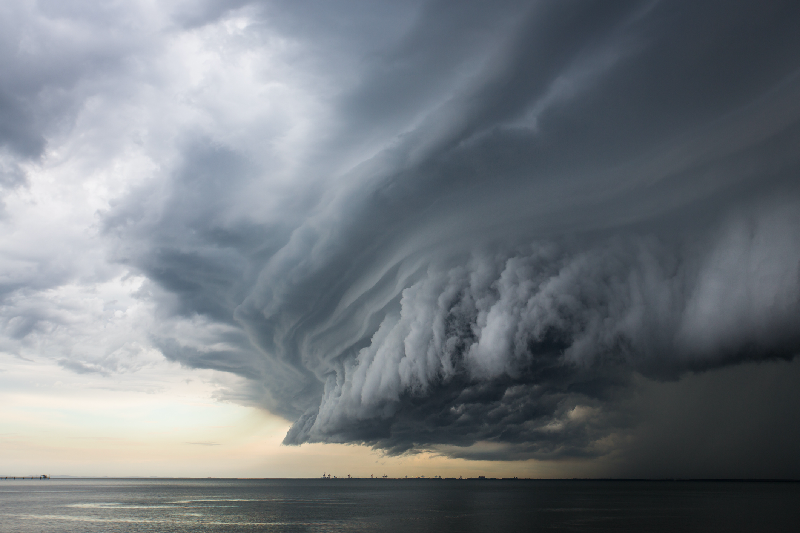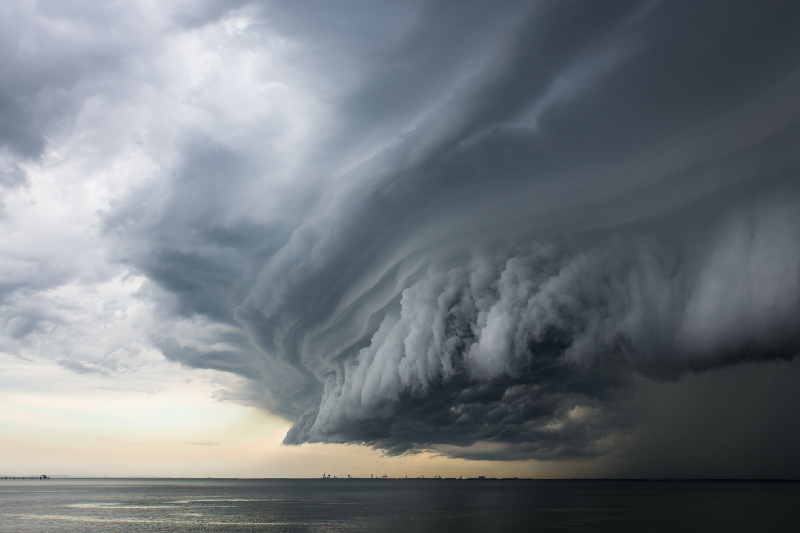Catching Electrons as They Escape a Liquid
Electrons moving through liquids play a key role in the chemistry of clouds and in the effects of radiation on biological tissues. But measuring these electrons has been challenging, especially for very slow electrons. Now researchers have demonstrated a method that brings them a step closer to gauging such electrons’ energies within a liquid. The team used photons to eject electrons from tiny droplets and then measured the electron energies, showing good agreement with their theoretical model. In the future, the technique may help clarify how electrons interact with liquids in many important settings.
In the atmosphere, chemical reactions occur among molecules and ions dissolved in water droplets. Many of these reactions, researchers suspect, take place preferentially in a thin shell close to the droplet surface. Electrons in the liquid, known as solvated electrons, can trigger these reactions if they have the right energy. So to fully understand the chemistry, researchers need to learn about the electron energies within droplets and specifically how they differ at the surface compared with the droplet interior. Biologists have a related interest: radiation passing through biological tissue generates slow electrons whose energies vary as they move through cells. Understanding these variations can help researchers learn where DNA damage is most likely to occur.
But measuring the energy difference between interior and surface electrons in a droplet isn't so easy. The usual starting point is to eject electrons from the liquid using laser light and then measure the distribution of electron energies. This energy spectrum can potentially be used to work backward and recover the variations of electron energies within the liquid. For 20 years, researchers have tried to get clean data by studying electrons ejected from tiny jets of liquid. But these experiments have been plagued by problems, including an extreme sensitivity to uncontrolled electrical charging of the jet and difficulties in measuring slow electrons.
Now chemist Ruth Signorell and colleagues from the Swiss Federal Institute of Technology (ETH) in Zurich have pioneered a different approach, using a beam of single liquid droplets injected into vacuum soon after being created by an atomizer. The new technique allows precise tuning and control of the electric charge on the droplets and also makes it possible to use detection methods with high sensitivity to very slow electrons.
To demonstrate the principle, Signorell and colleagues worked with 420-nanometer-wide droplets of the nonvolatile liquid dioctyl phthalate. Droplets of this liquid evaporate slowly enough to allow time for the experiment, in which the team hit them with laser light and then measured the ejected electrons’ directions of motion and final energies. They could also put specific charges ( +16,+8,0,−7, or −15 electron charge units, in this study) onto droplets by subjecting them to a controlled spray of ions. They found close agreement between their experimental data and their simulations, including distinct results for higher vs lower energy electrons.
For higher energy electrons (those having final energy above 1 eV), the electron spectra from negatively-charged droplets were shifted toward higher energy, compared with neutral droplet spectra. The negative charge provided an extra repulsive force as electrons departed their droplets. The opposite effect occurred for electrons ejected from positively-charged droplets, which had lower energies than those from neutral droplets.
For energies below 1 eV, a quantum effect reduced the number of low-energy electrons crossing the energy barrier presented by the liquid-vacuum interface. Many of these electrons had enough energy to surmount the barrier. But the similarity of their quantum (de Broglie) wavelengths to the thickness of the barrier led to quantum wave interference and a strong probability of reflection. Simulations suggested that this sensitivity to the height and width of the barrier may allow future experiments to characterize the details of the liquid-vacuum interface, information that is currently inaccessible.
These experiments, Signorell admits, don't yet determine how much energy electrons gain or lose as they move within a droplet, but they do demonstrate the value of the technique. “What is unique about the droplet experiment,” she says, “is the high sensitivity to the precise nature of the forces tending to keep the electrons inside the droplet.” Chemist John Herbert of Ohio State University in Columbus says the new technique is important because it should provide a complementary approach to the liquid jet experiments that researchers have relied on in the past.
This research is published in Physical Review Letters.
–Mark Buchanan
Mark Buchanan is a freelance science writer who splits his time between Abergavenny, UK, and Notre Dame de Courson, France.





